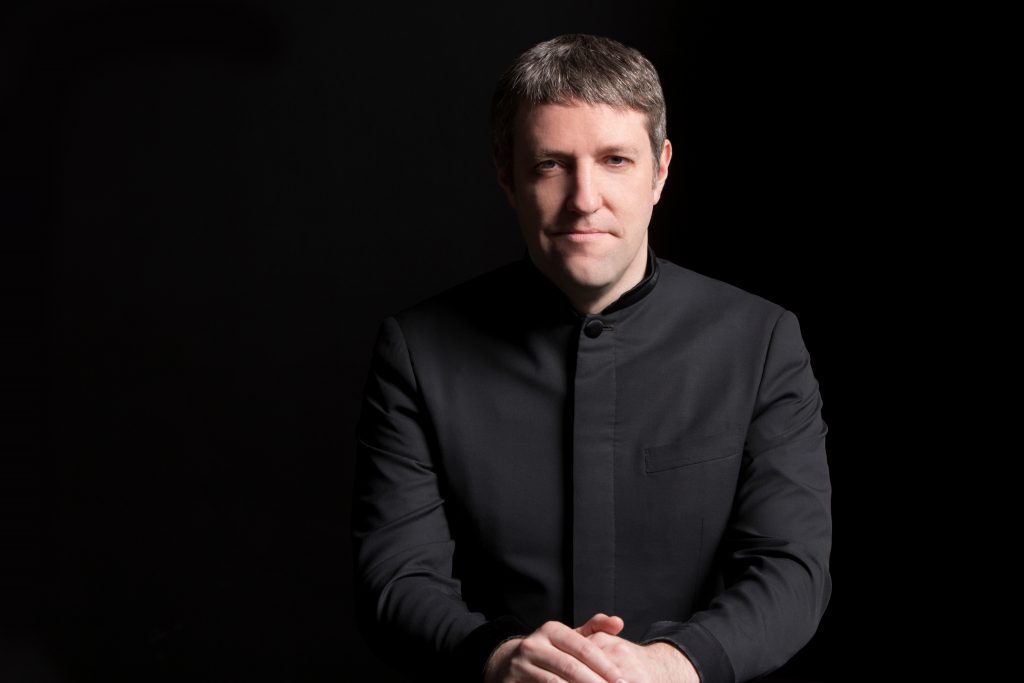Three Great Works for Piano Quintet
MSO Resident Conductor and formidable pianist Yaniv Dinur performs with the Philomusica Quartet.
The Philomusica Quartet (violinists Jeanyi Kim and Alexander (Sascha) Mandl, violist Nathan Hackett and cellist Adrien Zitoun) are completing their 6th year in residence at Wisconsin Lutheran College, but return to their original home on Milwaukee’s East Side, the Wisconsin Conservatory of Music, for a concert Monday night. Yaniv Dinur joins the quartet on piano for two great piano quintets, along with a shorter but also sublime work.
Dinur, currently Resident Conductor of the Milwaukee Symphony Orchestra and Music Director of the New Bedford Symphony Orchestra, is lauded for his bold and engaging programming, and insightful interpretations. His considerable talent as a concert pianist may be less well known. Dinur made his concerto debut with the Milwaukee Symphony in 2019, playing and conducting Mozart’s D Minor Concerto. He received critical acclaim for his “fluid, beautifully executed piano passages” and “deeply musical playing” (Milwaukee Journal Sentinel). He has often appeared in pre-talks at Milwaukee Symphony concerts using the piano to guide listeners through a concert. View a similar example here. (Or check out this COVID-inspired basement concert from last year.)
The concert features three undeniable masterpieces.
Robert Schumann (1810-1856) set aside 1842 to focus on chamber music, completing three string quartets and three chamber works for piano and strings as trio, quartet, and quintet. Recognizing the evolution of the fortepiano, Schumann created a piano quintet often symphonic in character, Quintet for Piano and Strings in E Flat major, Op. 44 (1843.)
Critic Kai Christensen feels that Schumann’s piano quintet “is not only Schumann’s greatest chamber music work, it is one of the greatest chamber works of all time, of such majesty and artistry that it reigns supreme on any concert program.” He continues, “Its epic four-movement design includes an expansive, large first-movement sonata, a powerfully dark slow movement based on a funeral march with a Schubertian gravity, a rollicking scherzo with two trios, and a mighty, contrapuntal finale.”
In five movements Shostakovich alternates between powerful, playful sections and tender, often sorrowful episodes, especially in the adagio movement, a quiet, contemplative fugue. Although reflecting classical structures in its development, the sound world of his quintet is all Shostakovich, designed with a popular appeal similar to his Fifth Symphony written at nearly the same time.
From all of his massive output, musicians single out the unfinished works of Franz Schubert (1797-1828) to praise as well – his Unfinished Symphony and a single movement from an early string quartet. The Quartettsatz, D 703 (1820) may be only a single opening movement, but has been viewed as among the first of his major works. Some speculate that Schubert just could not grasp how he could follow such a strong opening with a standard quartet structure.
Schubert’s movement opens with an intense unstable theme contrasted with a lyrical melody. Energy and tranquility coexist for a brief nine minutes. It’s as though we are sitting in on a rehearsal with the quartet just reviewing one last time the critical opening moments of a great quartet.
The Philomusica concert begins Monday, May 23 at 7:30 p.m. at the Wisconsin Conservatory of Music, 1584 N. Prospect Ave., Milwaukee. Tickets may be purchased at the door or online. Complimentary parking is available at Milwaukee Eye Care, 1684 N. Prospect Ave., one block north of the Conservatory for evening concerts.
Preview
-
A Sacred Choir, 70 Voices Strong
 Dec 14th, 2025 by Martha Brown
Dec 14th, 2025 by Martha Brown
-
Prometheus Trio Goes Bohemian
 Dec 3rd, 2025 by Martha Brown
Dec 3rd, 2025 by Martha Brown
-
Present Music Offers New Choral Works
 Nov 20th, 2025 by Michael Barndt
Nov 20th, 2025 by Michael Barndt





















